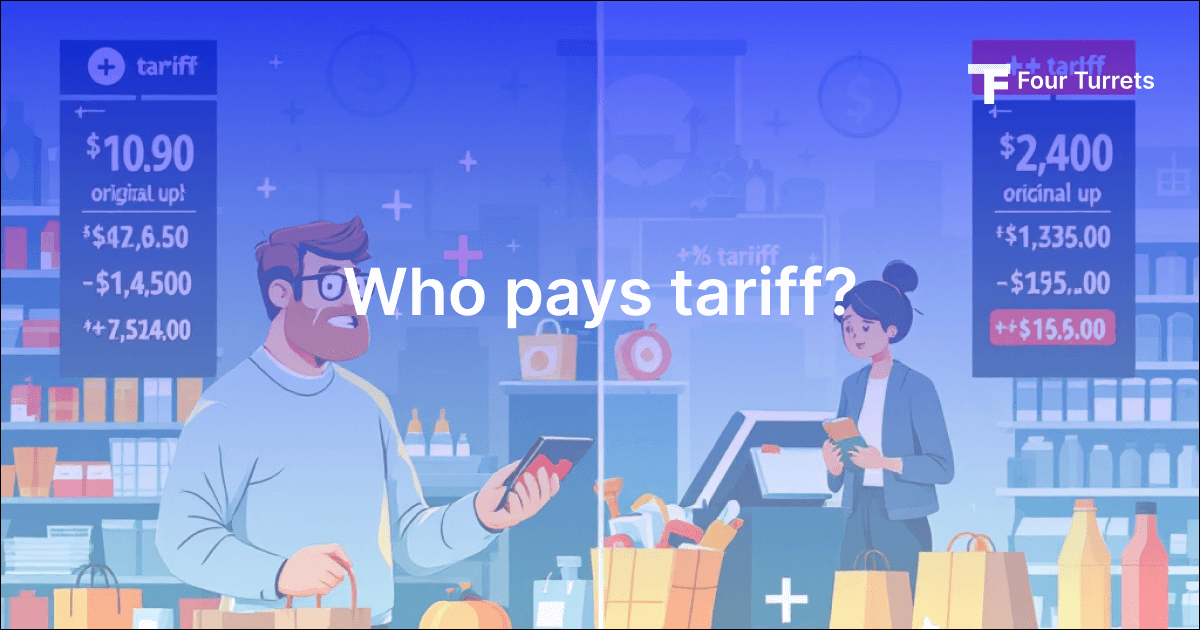Unpacking the Costs on Imported Goods
Tariffs are a frequent topic in discussions about global trade, economic policy, and international relations. But when a government imposes a tariff on imported goods, a crucial question arises: who actually bears the financial burden? While the answer might seem straightforward, the reality of the trade economy is more complex. Understanding how tariffs work and who ultimately pays is essential for businesses involved in international commerce.
What Are Tariffs?
At its core, a tariff is a tax imposed by a government on goods or services imported from another country. Governments may levy tariffs for several reasons, including:
- Generating revenue.
- Protecting domestic industries from foreign competition.
- Addressing trade imbalances or perceived unfair trade practices, as a tool in geopolitical negotiations.
For instance, governments sometimes use tariffs on imported goods to shield and encourage growth in specific domestic “infant industries”. Direct Payer of tariffs: The Importer!
But, if you dive a bit deeper, you will find out that the ultimate burden falls on the end-users only.
Despite common misconceptions or political rhetoric suggesting foreign exporters pay tariffs, the direct financial responsibility falls squarely on the domestic importer. When goods arrive at the border, the company bringing those goods into the country is legally obligated to pay the tariff tax to its government.
This is a critical first step in the tariff cost chain. Companies importing products are the ones who initially pay the tariff duties Costs Ripple through the Trade Economy.
While the importer makes the initial payment, the cost rarely stops there. The financial impact of tariffs tends to cascade through the supply chain:
- Absorption by Importer: The importing company might absorb the tariff cost, reducing its profit margins. This is more likely in highly competitive markets where raising prices could mean losing customers.
- Pass-Through to Wholesalers/Retailers: More commonly, the importer increases the price of the goods sold to wholesalers or retailers to cover the tariff expense.
- Pass-Through to Consumers: Wholesalers and retailers, facing higher costs from the importer, often pass this increase along to the end consumer through higher retail prices This means everyday shoppers often indirectly pay for tariffs through increased costs for imported goods.
- Impact on Domestic Producers: While tariffs aim to protect domestic industries, they can also increase costs for domestic manufacturers who rely on imported materials or components subject to tariffs, potentially leading to higher prices for domestically produced goods as well.
The extent to which costs are passed on depends on factors like market competition, the price sensitivity of consumers (elasticity of demand), and the specific product.
Tariffs vs. Free Trade Agreements (FTAs)
Tariffs represent barriers to international commerce. In contrast, free trade agreements (FTAs) aim to reduce or eliminate these barriers, including tariffs, between participating countries. Free trade agreements are designed to open markets, expand opportunities for businesses, and make it easier for companies to compete globally by lowering the costs associated with imported goods.
Businesses trading with countries covered by an FTA should explore how to qualify their goods to benefit from reduced or zero tariffs.
Why the Confusion Over Who Pays?
The idea that the exporting country pays the tariff often stems from political statements However, the mechanics are clear: the tax is levied on the import transaction within the importing country, and the importing entity pays it.
While tariffs can hurt the exporting country’s economy by reducing demand for its products, the direct payment obligation rests with the importer.
The Broader Impact on Global Trade
Tariffs can have wide-ranging effects beyond immediate costs. They can lead to:
- Trade Disputes: Retaliatory tariffs from other countries can escalate tensions.
- Supply Chain Adjustments: Businesses may seek alternative suppliers in countries not subject to tariffs.
- Economic Slowdown: Increased costs and trade friction can dampen overall economic activity within the trade economy.
- Reduced Choice & Innovation: Tariffs can limit the availability of certain imported goods, potentially reducing consumer choice and competitive pressure that drives innovation.
Conclusion: A Shared Burden
So, who ultimately pays tariffs then? While the importer writes the check to the government, the financial burden is often distributed. Businesses along the supply chain and, frequently, the end consumers share the cost through higher prices. Tariffs are a complex instrument in global trade with significant implications for businesses navigating the import process and the broader trade economy. Understanding this flow of costs is vital for effective planning and strategy in international markets.



